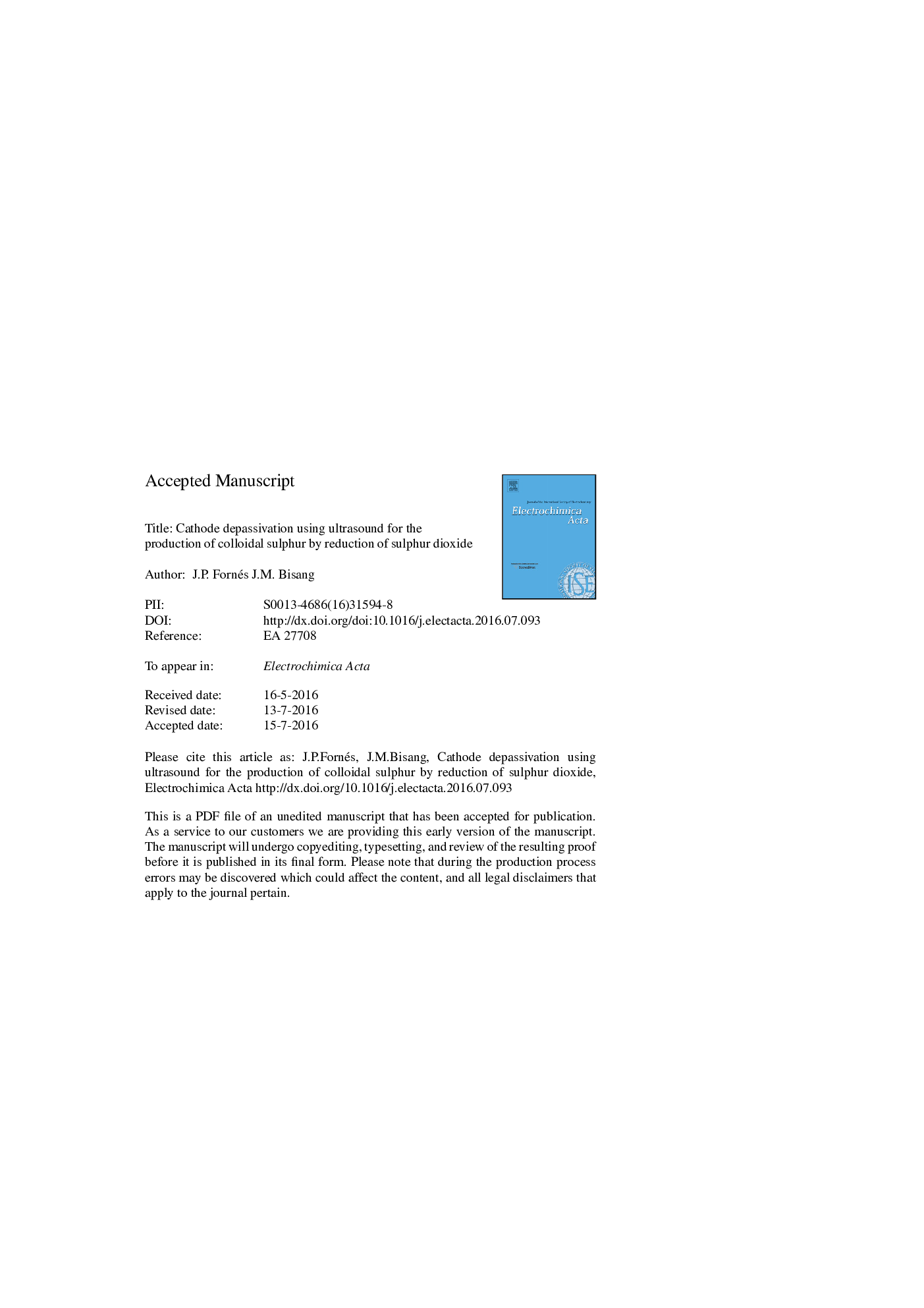| Article ID | Journal | Published Year | Pages | File Type |
|---|---|---|---|---|
| 6605584 | Electrochimica Acta | 2016 | 33 Pages |
Abstract
The effect of ultrasound is analysed in order to avoid the passivation of the cathode as a result of blocking the electrode surface area by the sulphur produced from sulphur dioxide reduction. The experiments were carried out with a rotating cylinder electrode using either a single phase electrolyte which contained 5 g dmâ3 sulphur dioxide, or in a biphasic system processing a gas phase with 5% of sulphur dioxide in nitrogen. In both cases the supporting electrolyte was a 0.5 mol dmâ3 H2SO4 solution. It was found that the application of ultrasound is very effective to detach the sulphur from the cathode surface and also to improve the reactor performance in comparison with a silent system. The best working conditions were achieved at cathodic potentials in the range of â0.6 to â0.7 V. vs. SCE. Representative values for the figures of merit of the process are as follows: the space time yield was 1.4 kg mâ3 hâ1 and 0.7 kg mâ3 hâ1 for the biphasic and single phase systems, respectively. The current efficiency was 70%, 23 kWh kgâ1 the specific energy consumption and 91% the molar yield towards the sulphur production in the biphasic system at â0.7 V. The volumetric mass-transfer coefficient was calculated from experimental data and compared with the theoretical prediction for a rotating cylinder electrode under silent condition, corroborating the beneficial effect of ultrasound for the production of colloidal sulphur. The particles have high purity and a spheroidal shape with an average diameter of 1.84 μm, similar to those obtained without the application of ultrasound.
Related Topics
Physical Sciences and Engineering
Chemical Engineering
Chemical Engineering (General)
Authors
J.P. Fornés, J.M. Bisang,
